How do you follow up the console that quite literally saved the video game industry?
That was the question Nintendo had to address when making their 16-bit successor to the Nintendo Entertainment System (NES). Plus, it didn’t help matters that console rival Sega had a good two-year head start on this new era of gaming with the Sega Genesis. Released in the early 90s, Nintendo’s answer was the Super Nintendo Entertainment System (SNES), a supercharged NES that could pump out the best graphics and sound of any game console at the time.
In its lifetime, the SNES would go on to beat the Sega Genesis as the best-selling console of the era. Now over 30 years later, the SNES is remembered as one of the greatest consoles ever made. This everlasting legacy can’t be credited to its stellar graphics card or sound chip, but to the SNES’s library of timeless classics.
 robtek / Shutterstock
robtek / Shutterstock20. F-Zero
Publisher & Developer: Nintendo
Year: 1991
Birthed as a technical showcase for the SNES’s graphical power, F-Zero did much more than simply wow gamers with its graphics — it created an entire subgenre.
As the first futuristic racing game, F-Zero had gamers zipping through intricate tracks across three cups. The tight controls gave this racer more depth than any other racing game before it. Rather than constantly holding down the acceleration, players had to know when to speed up and slow down in order to properly navigate all the tight turns and avoid elimination.
While F-Zero may not get any love from Nintendo nowadays, there is still lots to love in the SNES original.
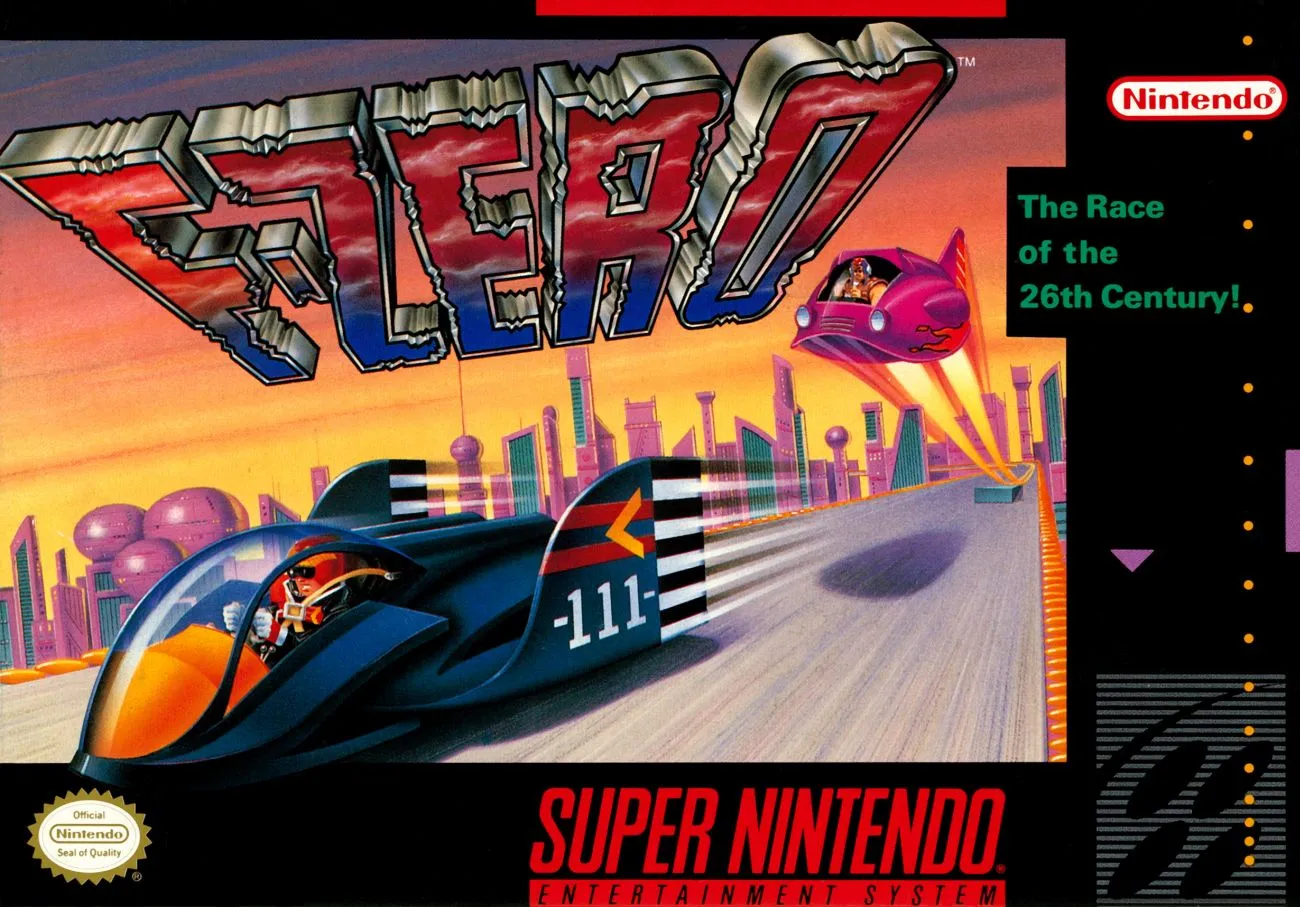 Nintendo
Nintendo19. Earthworm Jim
Publisher: Playmates Interactive Entertainment
Developer: Shiny Entertainment
Year: 1994
Not everyone will remember Earthworm Jim, but those who do have nothing but fond memories and indescribable recollections of its world. Jim was just a mindless earthworm until a sentient spacesuit fell from the sky and took him on a spacefaring adventure to defeat the nefarious Psy-Crow.
Each stage draws gamers through a plethora of cartoonishly scenic settings, like a booger canyon and Buttville. Moreover, each has its own unique gameplay gimmick to keep things fresh. This truly original experience was defined by its wacky humor, absurd characters, and surreal level design.
Earthworm Jim manages to deliver on its crazy aesthetic with crisp sound design, engaging gameplay, and impressive visuals. Each level features multiple clearly defined backdrops and various new challenges and enemies that fit each level’s aesthetic; all without sacrificing playability.
 retrosutra / YouTube
retrosutra / YouTube18. Teenage Mutant Ninja Turtles IV: Turtles in Time
Publisher & Developer: Konami
Year: 1992
In the late 80s, early 90s, the Teenage Mutant Ninja Turtles were at the peak of their popularity. There were comics, TV shows, live-action movies, and toys all dawning the visage of the Heroes in a Half-Shell.
When it came to the world of video games, the best TMNT games were found in the arcade. These beat ‘em ups had up to four players controlling one of the four titular Turtles as they fought through waves of the Foot Clan. While many tried to port these games to console, it wasn’t until Konami’s Turtles in Time when somebody succeeded.
Compared to the arcade original, the SNES version is a downgrade in the graphics department. Outside of that one failing, Turtles in Time stacks up in the controls and sound departments — and even outperforms the arcade version when it comes to content.
 NintendoComplete / YouTube
NintendoComplete / YouTube17. Mario Paint
Publisher: Nintendo
Developers: Nintendo and Intelligent Systems
Year: 1992
More of a tool than a proper video game, Mario Paint made the goal to create to your hearts content. Packaged with the SNES Mouse, Mario Paint gave players the ability to draw on an open canvas, design custom stamps, make simple animations, and compose music.
While not as in-depth as actually learning how to code or figuring out the ins-and-outs of your standard graphics program, Nintendo gave players a taste what it’s like to make assets in an actually video game through Mario Paint. A taste that has gone on to inspire many in and outside of the game industry.
 Gaming Historian / YouTube
Gaming Historian / YouTube16. ActRaiser
Publisher: Enix
Developer: Quintet
Year: 1991
While more commonplace nowadays, not many games blended two vastly different genres together in one game during the SNES era. If so, none of them were as unique or polished as Enix’s ActRaiser.
Blending the precise actions of a side-scrolling platformer with the intricacy of a city-building simulator, ActRaiser dared to go where few games have rarely gone since — even its sequel. Despite how different each gameplay mode was, they both contribute to the end goal and vitality bonuses. Plus, the constant switching between each mode keeps the game fresh throughout.
 NintendoComplete / YouTube
NintendoComplete / YouTube15. Contra III: The Alien Wars
Publisher & Developer: Konami
Year: 1992
There is no better word to describe the Contra series than intense. From the moment you load up any title in the series, you are dropped in the thick of things as enemies and bullets come at you from every direction. Contra III: The Alien Wars is no different.
With the move to new hardware, Contra III added improved graphics, dual-wielding weapons, more interactivity in the level design, and top-down stages that took advantage of the SNES’s Mode 7. While these new additions were all well-received, it’s the continued support of couch co-op — something that is a rarity nowadays — that has kept Contra III in the hearts of many long after the credits rolled.
 GameGrumps / YouTube
GameGrumps / YouTube14. Super Mario Kart
Publisher & Developer: Nintendo
Year: 1992
Mario has his fair share of spin-offs from sports titles to RPGs, but no spin-off series has been more successful for gaming’s number one plumber than the first — Mario Kart.
Unlike any racing game before it, Super Mario Kart wasn’t trying to simulate real racing as close as humanly possible. Instead, it focused on how fun it can be drift around corners and fire race-altering items at unsuspecting competitors. This arcadey gameplay lent itself well to multiplayer races and the battle mode, which became the game’s go-to modes.
Although its graphics haven’t held up, Super Mario Kart’s legacy — single-handedly creating the kart-racing genre — and gameplay certainly does.
 Nintendo
Nintendo13. Secret of Mana
Publisher & Developer: Square
Year: 1993
Multiplayer in RPGs was unheard of during the 16-bit era. Well, that was until Secret of Mana came along.
With the help of the Multitap — a peripheral that allowed four controllers to be connected to the SNES at once — up to three players could take control of each party member for a drop-in drop-out cooperative experience. Considering the game’s default AI was less than stellar, multiplayer gave players a more active role in playing RPGs together.
While Secret of Mana laid the groundwork for multiplayer in RPGs, it was no slouch when it came to single player. It forgone the traditional turn-based gameplay found in most RPGs for real-time action similar to The Legend of Zelda.
 Square Enix / M2
Square Enix / M212. Super Castlevania IV
Publisher & Developer: Konami
Year: 1991
For Castlevania’s jump to 16-bits, Konami chose to reimagine the 8-bit classic for a modern audience.
With a new shine on his armor, Simon Belmont ventured into Dracula’s castle once again to defeat the vampire lord. From the moment the first level starts, the player can see the difference the SNES makes as Simon moves more fluidly, can whip in any direction, and can adjust his trajectory mid-jump.
With a huge leap in graphics, longer levels, improved controls, and a beautiful soundtrack, Super Castlevania IV is the definitive classic Castlevania experience.
 Konami
Konami11. Super Mario World 2: Yoshi’s Island
Publisher & Developer: Nintendo
Year: 1995
Although it shares a name and a story link with Mario’s first SNES outing, that’s where the similarities between Super Mario World and Super Mario World 2: Yoshi’s Island end.
The Mario Bros. take a literal backseat to Nintendo’s trusty race of dinosaurs known as Yoshi. Engaging in the longest and greatest escort mission in gaming history, these multi-colored Yoshis carry Baby Mario from level-to-level on a quest to reunite the brothers.
The switch in protagonist gave Nintendo free reign to experiment with the graphics, gameplay, and level design. Yoshi’s Island swapped out the cartoony art of past Mario games for a pastel art style that was pulled straight out of a storybook. The gameplay forgoes running and jumping for eating enemies and throwing them at others as eggs. Last but not least, the levels are some of the most creative in the entire series.
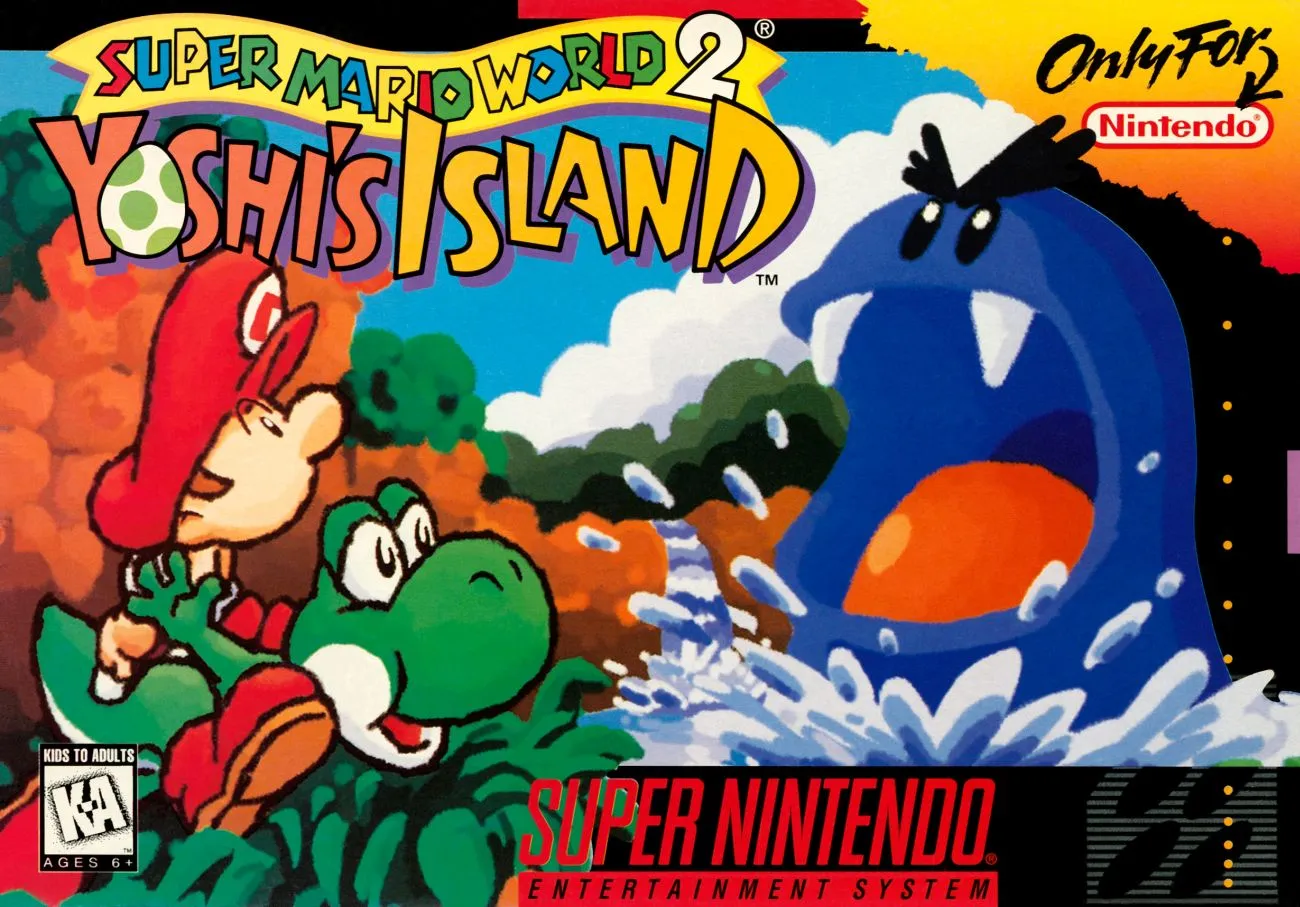 Nintendo
Nintendo10. Donkey Kong Country
Publisher: Nintendo
Developer: Rare
Year: 1994
1994 was a banner year for Donkey Kong. After years of dormancy, Nintendo brought Mario’s former antagonist to star in two brand new games. The first expanded the character’s titular game for a new generation, while the second would put the antagonistic ape into the starring role of his own platformer.
Mostly remembered for its stunning pre-rendered graphics, Donkey Kong Country is no slouch in the gameplay department. Although one can move through a level as fast as possible, there is a focus on collectibles and secrets that comes with experimentation and going off the beaten path. This exploratory style along with Rare’s expert level design made for a platformer that can stand head-to-head with Mario’s best.
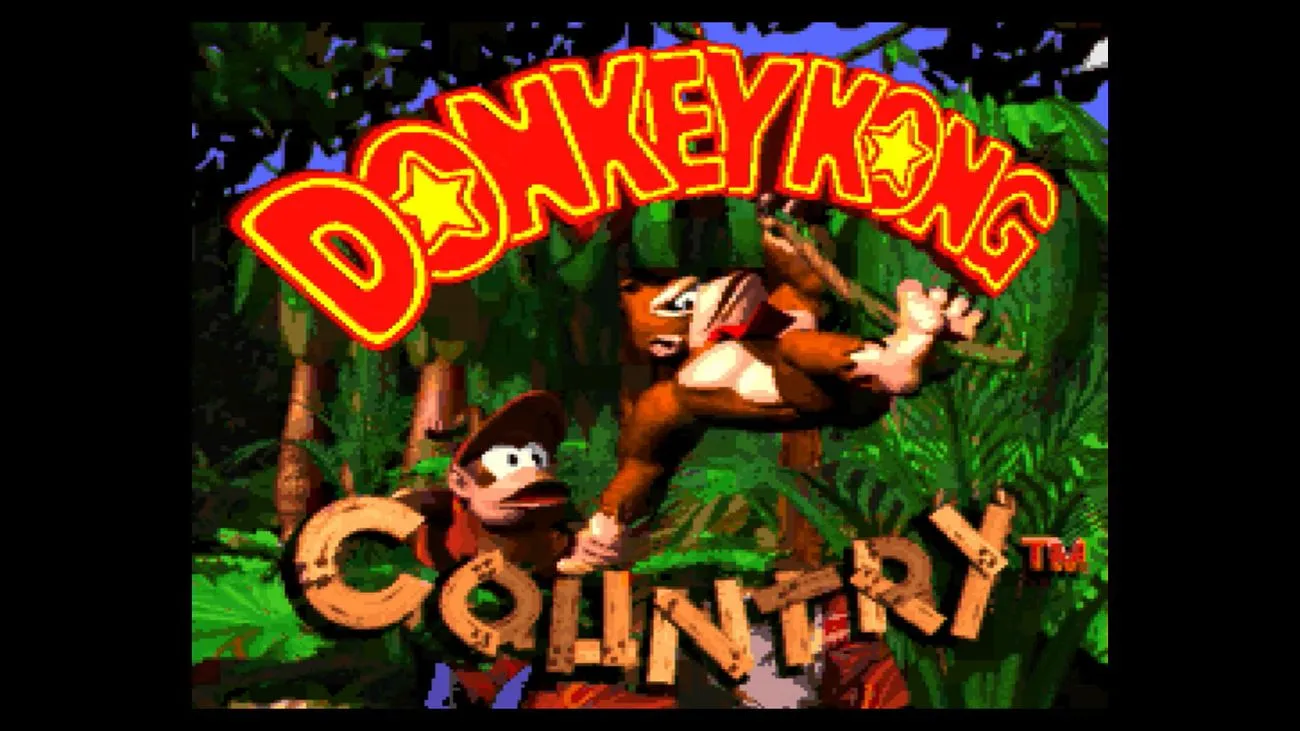 Nintendo / Rare
Nintendo / Rare9. Super Mario RPG: Legend of the Seven Stars
Publisher: Nintendo
Developer: Square
Year: 1996
Although we have an embarrassment of riches when it comes to RPGs starring Nintendo’s favorite son nowadays, that wasn’t always the case. In fact, nobody could see how the platforming world of Mario and the Mushroom Kingdom would translate into a full-on RPG. Well, that is until Super Mario RPG: Legend of the Seven Stars hit store shelves.
Setting aside the tried-and-true Mario narrative, Super Mario RPG introduces a new threat to Mario’s world — a group of sentient weapons known as the Smithy Gang. Apart from the fleshed-out story, Square took the staples of traditional Mario gameplay and perfectly adapted it to the RPG structure. This is perfectly demonstrated than in the battle system, which allows players to make timed button presses to increase the damage/effectiveness of an attack, defense, special move, or item.
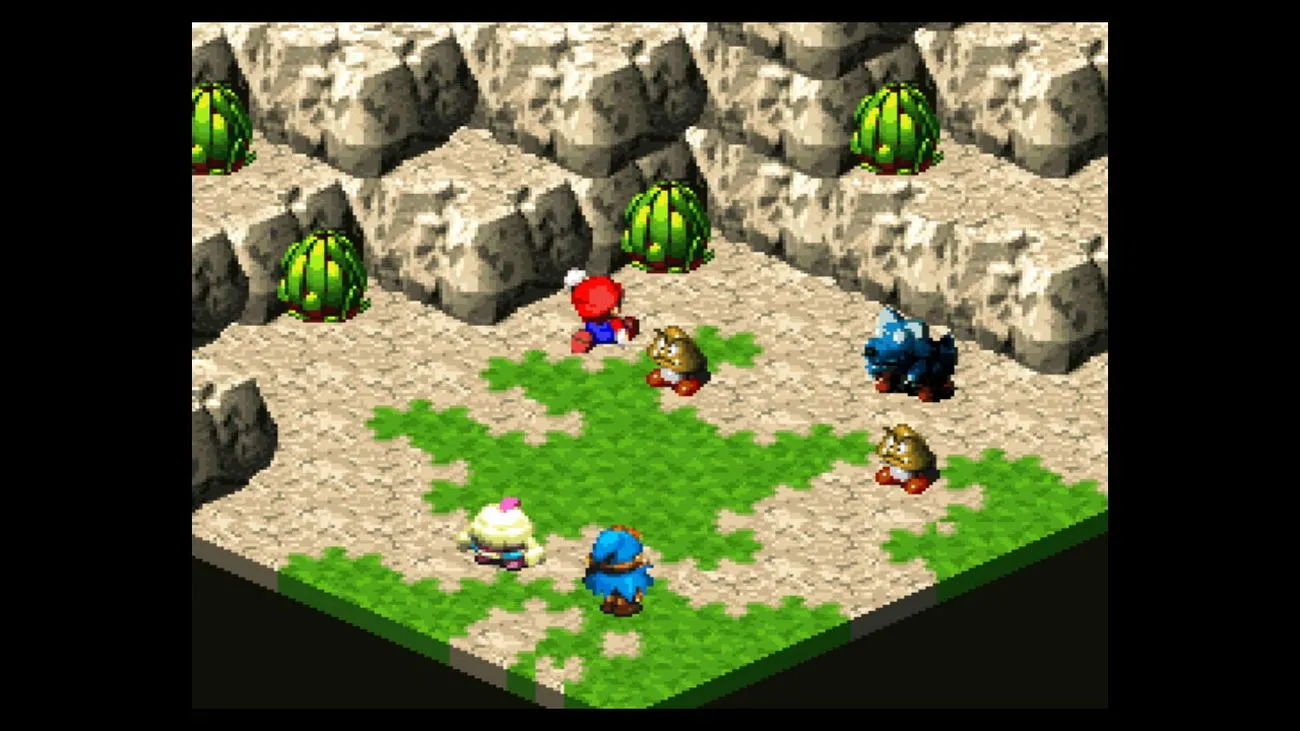 Nintendo / Square
Nintendo / Square8. EarthBound
Publisher: Nintendo
Developer: Ape and HAL Laboratory
Year: 1995
In an era where RPGs mostly stuck to high fantasy settings, EarthBound stood out for its contemporary setting based around parodying RPG traditions and American culture. Sadly, it was passed on back in 1995 due to its simplistic graphics and off-putting marketing campaign. Unfortunately for those that skipped it in 1995, they missed out on a gem.
EarthBound might look simplistic, but it hides nuance just below the surface. While the combat may look ripped from Dragon Quest, there is much more depth than choosing the right attack and hoping the random number generator goes in your favor. In particular, your health box is styled like an odometer. So, if you get hit with a devastating attack, you have the opportunity to heal before the health box rolls to zero. What RPG has something that strange yet absolutely genius? And that is only one example of EarthBound’s boundless (pun intended) creativity.
Often imitated, rarely duplicated, EarthBound aimed to and succeeded in subverting the norm in a genre that was quickly becoming overburdened with tropes and rehashed themes.
 Nintendo / Ape / HAL Laboratory
Nintendo / Ape / HAL Laboratory7. Street Fighter II Turbo
Publisher & Developer: Capcom
Year: 1993
There’s no denying Street Fighter II’s impact on the fighting game community, nor its presence in the SNES lineup is. However, Turbo gave the now long-running Capcom franchise its kickstart.
Although there was nothing wrong with the original, Turbo’s buffed game speed made each round blisteringly fast and nail-bitingly intense, forcing players buckle-in and get serious or pass the controller. Thanks to the expanded roster, famed turbo mode, and minor move set balances, it immediately stood out among the competitive crowd.
Even for the casual couch players, Street Fighter II Turbo set a new standard for what a party game should offer.
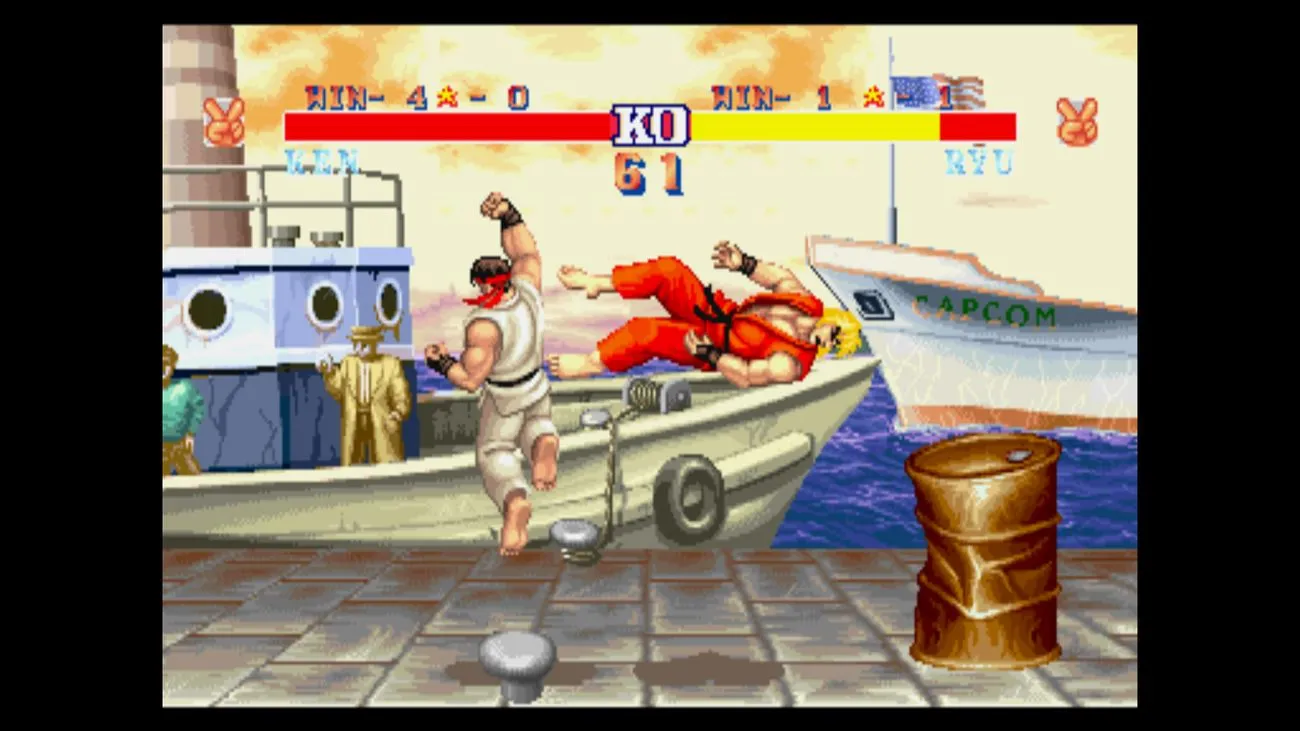 Capcom
Capcom6. Super Mario World
Publisher & Developer: Nintendo
Year: 1991
Releasing a year and a half after Super Mario Bros. 3 — arguably the greatest game in the series — Super Mario World had big shoes to fill. On top of living up to its predecessor, Super Mario World released alongside the SNES, meaning it needed to succeed in order for the SNES to succeed. No pressure.
Well, the plumber was up for the challenge and then some. Super Mario World took the base that Super Mario Bros. 3 refined and ramped it up to eleven. All thanks to ingenious ideas such as a ridable dinosaur, saving an extra power-up for later, and triggering blocks which opened new exits for completed levels.
With improved graphics, precise controls, and 96 levels of platforming bliss, Super Mario World served as the perfect showcase for the newly released SNES.
 Nintendo
Nintendo5. Final Fantasy III
Publisher & Developer: Square
Year: 1994
Like other entries on this list, Final Fantasy III had a lot to live up to. From introducing the Active Time Battle system to taking the series narrative in more complex directions, Final Fantasy II was a revolution for the long-running RPG franchise. So how does one game top that? By going bigger and better than anything that came before.
Final Fantasy III pops off the screen thanks to its masterful sprite work — which is more emotive and detailed than previous entries — outstanding soundtrack, memorable cast, and mature story.
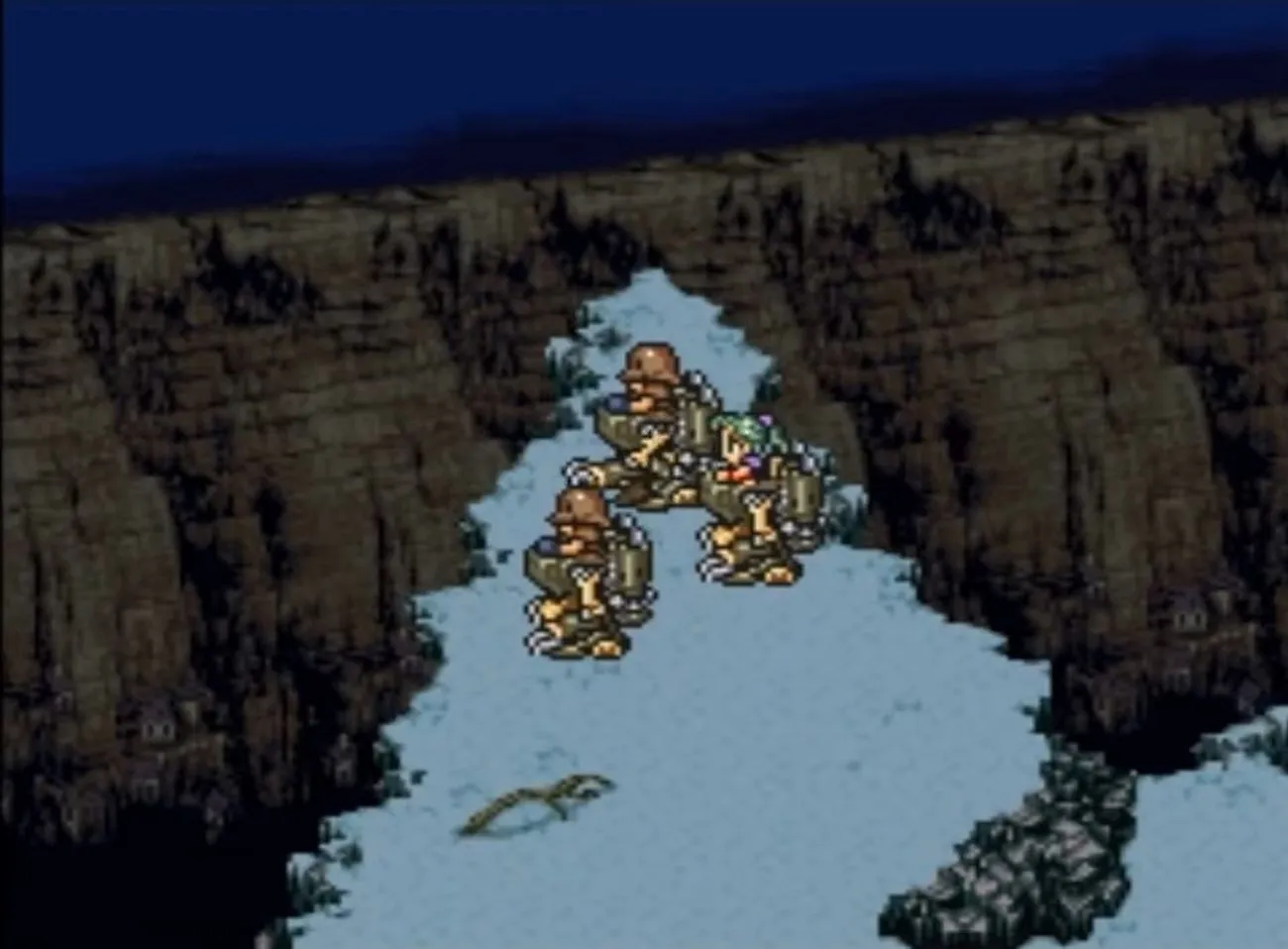 NintendoComplete / YouTube
NintendoComplete / YouTube4. Mega Man X
Publisher & Developer: Capcom
Year: 1994
With six entries on the NES, Capcom had more than established a winning formula for the Mega Man series. All they needed to really do when moving the series to SNES was update the graphics and tweak the gameplay, and they were golden.
Well, creator Keiji Inafune and Capcom didn’t think it was that simple. They wanted to push the series forward in a more mature direction while maintaining Mega Man’s core concepts of ability copying and an open level select. From this kernel of change came Mega Man X, a spin-off of the original Mega Man set a century after the main series.
While Mega Man X kept the core that made Mega Man a success in the first place, it made big changes in the form of gameplay and story. The introduction of Zero, the darker almost dystopian setting, wall-jumping, special armor attachments, and levels changing due the levels already beaten (ie. beating Chill Penguin causes Flame Mammoth’s stage to freeze) all made Mega Man X feel like the next evolution of Capcom’s venerable Blue Bomber.
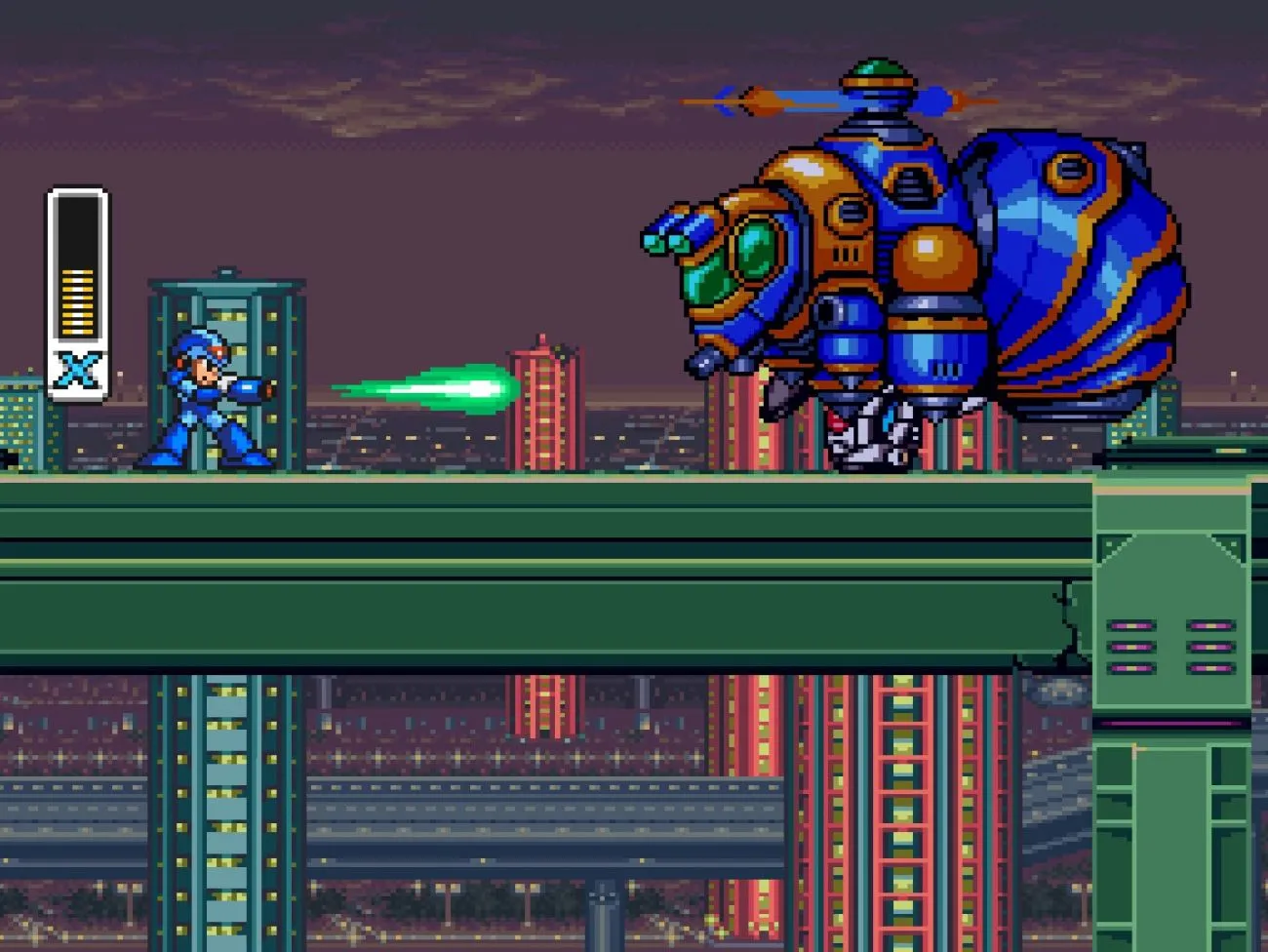 Capcom
Capcom3. Chrono Trigger
Publisher & Developer: Square
Year: 1995
Chrono Trigger is a landmark RPG not just because it’s a great game, but because of the talent it brought together. This game served as the first and only time the biggest names in RPGs — Hironobu Sakaguchi and Nobuo Uematsu of Final Fantasy fame, the creator of Dragon Quest Yuji Horii, and artist of Dragon Quest and Dragon Ball Akira Toriyama — worked together on a game. And was it ever special.
Regarded by many as a masterpiece, this time traveling epic introduced gameplay concepts, such as multiple endings and character-focused sidequests, that are standard in RPGs nowadays. Also, Chrono Trigger refined many of Square’s RPG stables, like the Active Time Battle system, immersive soundtrack, and intricate story, to its purest and greatest form.
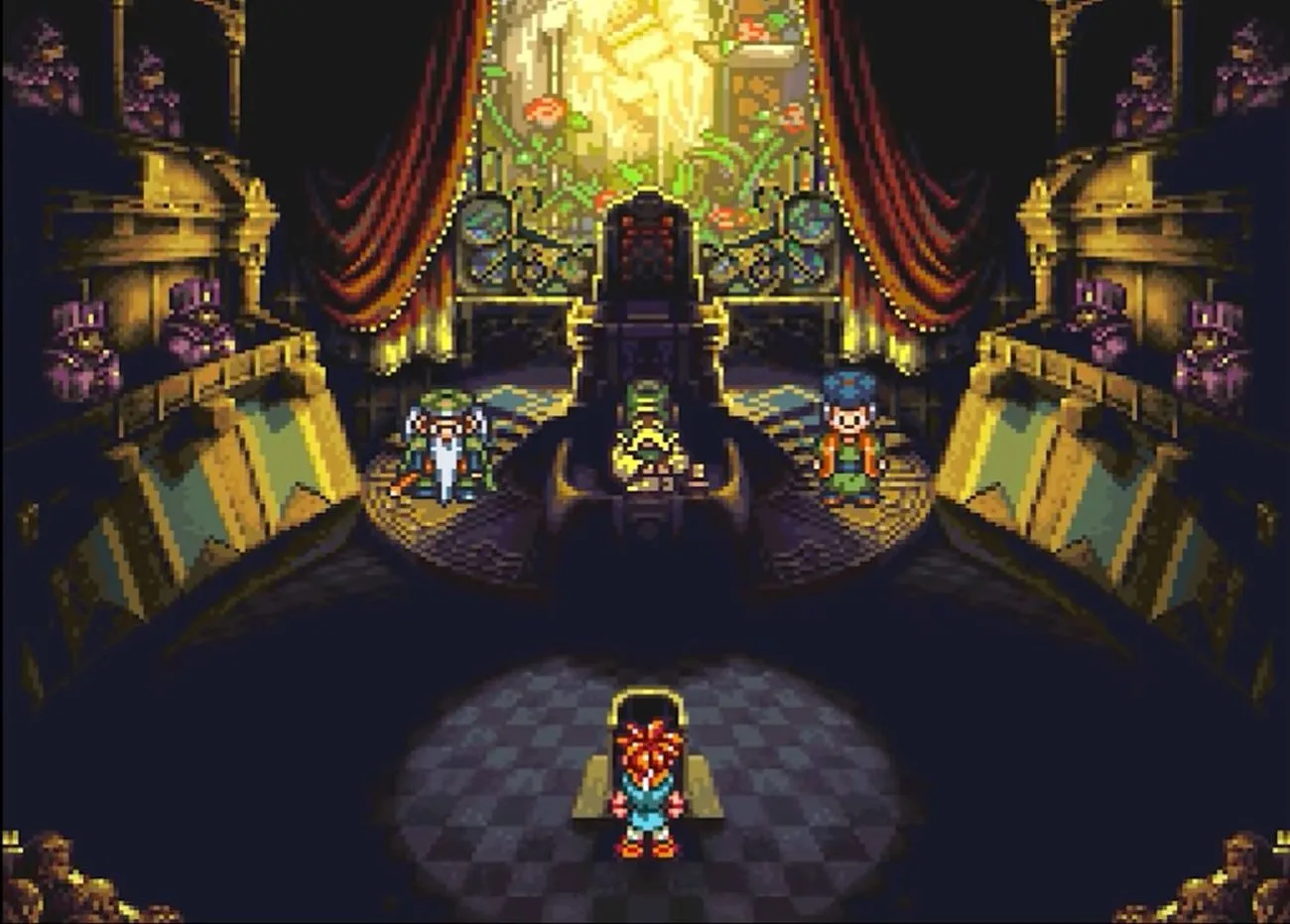 AustinSV / YouTube
AustinSV / YouTube2. Super Metroid
Publisher: Nintendo
Developer: Nintendo and Intelligent Systems
Year: 1994
“The last Metroid is in captivity. The galaxy is at peace…”
These words open Super Metroid and they couldn’t be more wrong. As you begin the game, you are greeted with a thrilling opening that sees nemesis Ridley steal said Metroid, thus causing Samus Aran return to the setting of the first Metroid, Planet Zebes.
From the moment Samus touches down on Zebes, you notice how drastic the leap in technology is between the NES and SNES. The world that you thoroughly explored in the first game is brought to life thanks to detailed 16-bit graphics. The isolation you felt while exploring the long corridors of Zebes the first time is intensified due to the creepy music and atmospheric sound design.
While the setting of Super Metroid is the most immersive of the 16-bit era, the game wouldn’t be considered one of the best games of all time without superb gameplay. Gameplay that has gone on to influence an entire subgenre. Gameplay that is still endlessly engaging over two decades later.
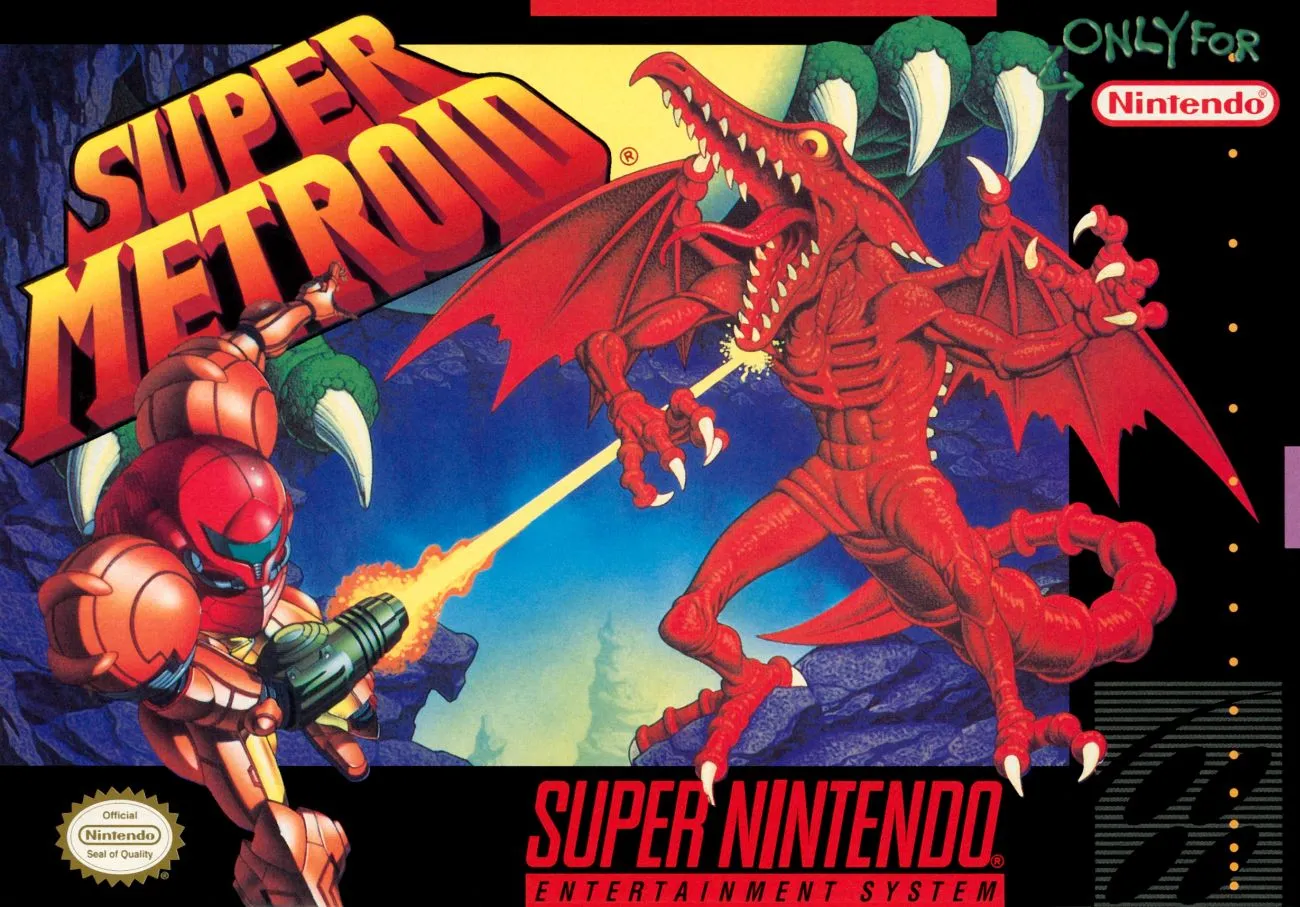 Nintendo / Intelligent Systems
Nintendo / Intelligent Systems1. The Legend of Zelda: A Link to the Past
Publisher & Developer: Nintendo
Year: 1992
It’s a dark and stormy night. Woken up by a telepathic message from a stranger, Link finds his uncle preparing to defend Hyrule Castle. Told to remain in bed, Link disobeys his uncle’s commands to follows him into the depths of Hyrule Castle. What Link finds is a captive Princess Zelda and his dead uncle — and that is only the start of Link’s perilous adventure across parallel worlds.
Much more narratively focused than the preceding Zelda games, A Link to the Past serves as the perfect medium between the linear story-focused later entries and the open nature of the original Legend of Zelda. The player is free to explore the Light and Dark Worlds to their hearts content, only gated by major story beats and a couple of key items.
While having two expansive overworlds to explore is great, it wouldn’t be that fun without solid game mechanics and challenging puzzles. A Link to the Past delivers in spades by introducing major Zelda gameplay staples, such as the spin attack and hookshot, and including some of the finest dungeons in the series.
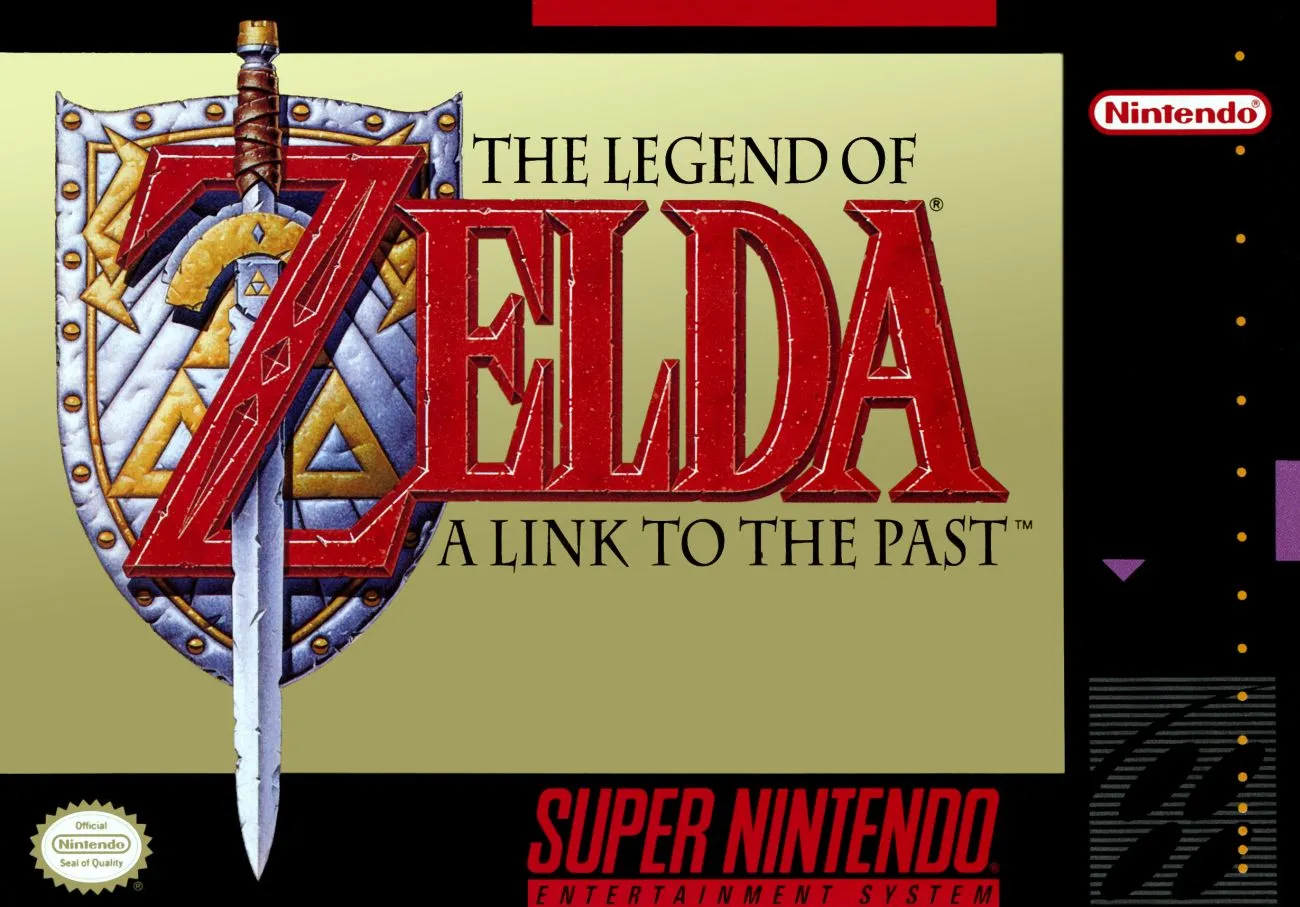 Nintendo
Nintendo